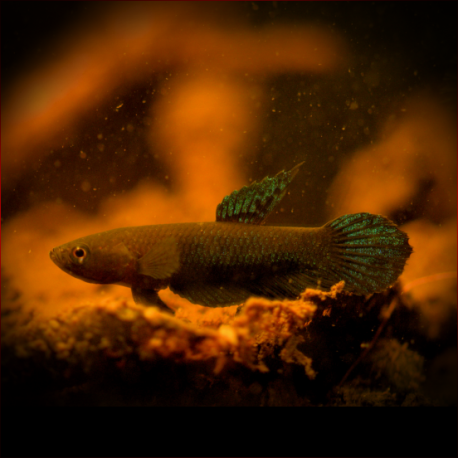More info
Datasheet
| Minimum Tank Size | 40 litres / 10.57 US gallons |
| Maximum Size | 3.5cm / 1.38inches |
| Temperature | 22°C / 71.60°F - 28°C / 82.40°F |
| Hardness | 1.01dgH / 18ppm - 5.04dgH / 90ppm |
| pH | 4.0-6.0 |
General Description
Betta Persephone is a member of the B. coccina group within the Betta genus, characterized by small adult size, red or black body coloration, and unique abdominal vertebrae count. With a max size of 3.5cm, these fish are adapted to forest peat swamps and possess a labyrinth organ allowing them to breathe atmospheric air.
Aquarium Setup
The ideal tank for Betta Persephone should have a capacity of at least 40 liters, set up with driftwood, branches, and dried leaf litter to mimic their natural habitat. Dim lighting, soft water with low pH (4.0-6.0), and minimal carbonate hardness are essential. Adequate cover, such as aquatic plants like Microsorum or Cryptocoryne spp., is crucial, alongside gentle filtration to replicate sluggish water conditions.
Behaviour
Known for their solitary nature and territorial behavior, Betta Persephone is best housed alone due to their care requirements. While they may tolerate small cyprinids or loaches in a well-covered aquarium with plenty of hiding spots, it's advisable to research tankmates carefully. Pairs can be maintained in a group if provided ample hiding spaces.
Feeding and Diet
In the wild, Betta Persephone feeds on small aquatic and terrestrial invertebrates. Captive specimens accept dried foods but thrive on live or frozen offerings like Daphnia and bloodworms for optimal health. Caution is advised against overfeeding as these fish are prone to obesity.
Reproduction & Dimorphism
Males of Betta Persephone exhibit more vibrant colors and extended fins compared to females. They are bubble nesters, with the male building nests where the fertilization occurs. The female, noticeable by paler coloration and dark flanks, lays eggs that the male cares for until hatching. Post-spawning, both parents partake in brood care until the fry are independent.
Habitat and Distribution
Endemic to forested regions near towns in southwestern Johor state, Peninsular Malaysia, Betta Persephone inhabits peat swamp forests with dark, acidic water. Facing habitat loss due to human activities like oil palm plantations, these fish are listed as 'Critically Endangered' on the IUCN Red List, emphasizing the urgency of conservation efforts.

